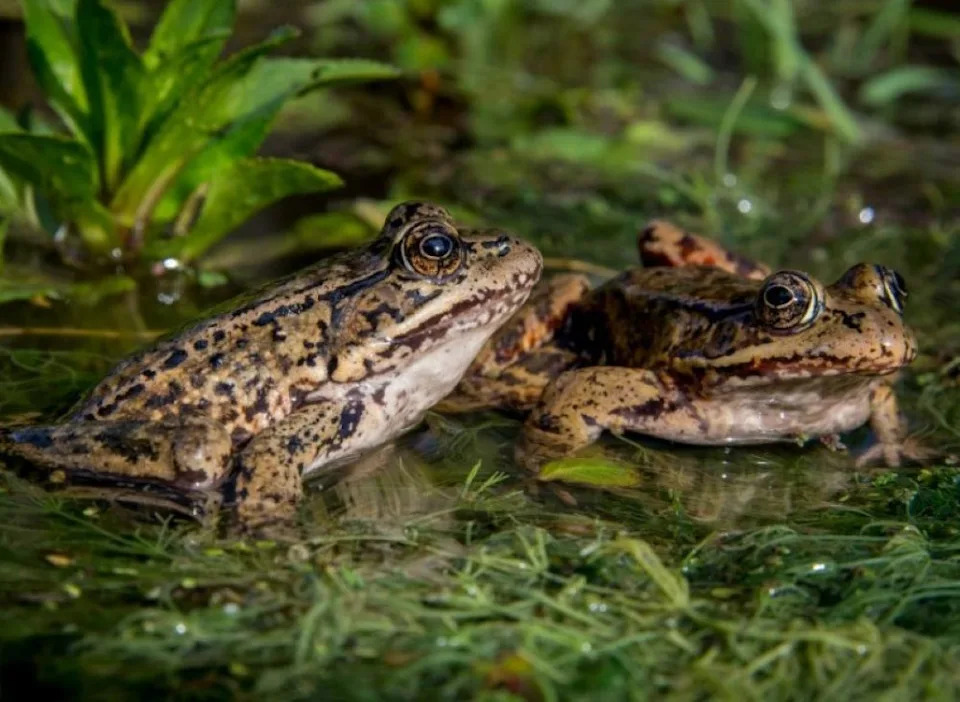Thanks to cutting-edge technology and good old-fashioned fieldwork, conservationists are hailing the comeback of an endangered amphibian in California.
LAist reported that, for the first time in decades, the night skies of Southern California are once again ringing with the croaks of the California red-legged frog. “We’re hearing them again,” said Susan North, director of stewardship for the Nature Conservancy in California, per LAist.
This 5-inch amphibian was once plentiful across California but was driven to near extinction due to disease, habitat loss, and invasive species. California has lost 90% of its historical wetlands due to drainage for agriculture and housing developments, depriving the frogs of their freshwater habitats.

Photo Credit: San Diego Natural History Museum
As San Diego’s Natural History Museum noted, the frogs disappeared entirely from San Diego County in the 1970s, and only a handful of populations remained over the border in Baja California.
Another man-made disaster for the red-legged frogs was the purposeful introduction of the American bullfrog west of the Rocky Mountains. Outside of their native range, invasive bullfrogs are a menace to native species. They are much larger and more aggressive than the red-legged frogs; they’ll eat pretty much whatever fits in their gaping maws. The California Department of Fish and Wildlife notes that bullfrogs have caused the extinction of over 100 species since the 1970s.
Amid these considerable challenges, the work to restore the red-legged frogs to Southern California began in earnest in 2020, LAist reported. After identifying suitable locations and clearing them of bullfrogs, several egg batches were brought over the border.
However, another problem surfaced: keeping track of whether or not the frogs were breeding. The best way to do this was through sound, but sifting through hundreds of hours of audio isn’t practical. That’s where AI came in. After a few tweaks, the model could distinguish calls between species and save countless hours of tedious toil.
“What they’ve done with AI on this project is incredible,” Clark Winchell of the U.S. Fish and Wildlife Service marveled, per LAist.
Reintroducing a species to an area it once occupied is challenging but rewarding work. To achieve a self-sustaining population, the issues that caused a species to vanish in the first place have to be addressed. However, with public awareness and community action, species can return and thrive once more.
Join our free newsletter for good news and useful tips, and don’t miss this cool list of easy ways to help yourself while helping the planet.
